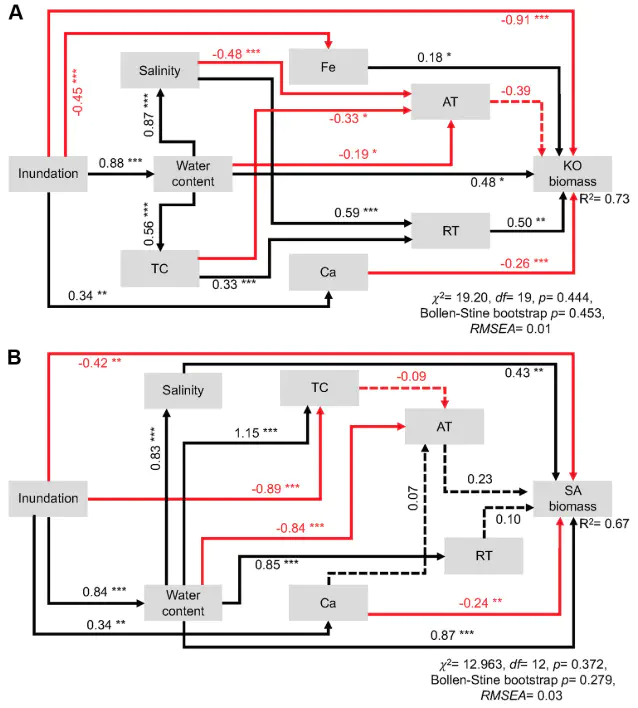Distinct Community Assembly Processes of Abundant and Rare Soil Bacteria in Coastal Wetlands along an Inundation Gradient

Abstract
Microbial communities commonly consist of a large number of rare taxa (RT) and few abundant taxa (AT), and it is important to identify the differences of the community assembly processes between RT and AT in response to environ- mental changes. However, the community assembly processes governing AT and RT in coastal wetland soils along an inundation gradient remain elusive. Here, an in situ mesocosm, with continuous inundation gradients and native mangrove Kandelia obovata or exotic cordgrass Spartina alterniflora, was established to determine the patterns and driving factors of community turnover and assembly processes of AT and RT. We found that RT exhibited a remarkably lower turnover rate than AT, and the niche breadth of RT was significantly narrower than that of AT. In comparison with AT, RT presented stronger phylogenetic signals for ecological preferences across environmental gradients. Null model analyses revealed that RT were more phyloge- netically clustered and primarily governed by homogeneous selection, while AT were more overdispersed and dominated by dispersal limitation. Soil water content was the most decisive factor for community turnover and assembly processes of both AT and RT. Structural equation modeling analysis showed that RT were strongly associ- ated with K. obovata biomass rather than S. alterniflora biomass, suggesting a strong relationship between RT and the growth of mangrove K. obovata. Overall, our study revealed distinct assembly processes of soil AT and RT communities in coastal wetlands, which is crucial for mechanistic understanding of the establishment and maintenance of soil microbial diversity in coastal wetlands under conditions of global environmental changes.